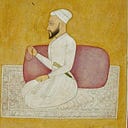Cousin Marriage (CM) occurs with significant frequency across North-Africa, the Middle-East, and West-Asia, with the practice being at least partially rooted in certain Islamic traditions. Pakistan has perhaps the highest rate of CM of any country in the world, clocking in at 57.9% in 2018, a marginal improvement from their figure of 60.5% in 2007.
In comparison, neighboring India generally exhibits quite low rates of CM. There is however an interesting trend of southern Dravidian states (excluding Kerala) registering significant levels of CM, notable even among the Tamils of Sri Lanka. Meanwhile Bangladesh, a country that is 90% Muslim, boasts a relatively low CM rate of 6.64%.
As depicted above, CM is seen at high levels across Pakistani society, but is most pronounced in the rural, uneducated, and poor.
In contrast to Pakistan, India’s rate of CM doesn’t seem to follow a clear trend when considering education, income, or caste. Muslims do exhibit the highest rate of CM in India, however the prevalence is much lower than their neighbors in Pakistan.
Interestingly, the Muslims of Sri Lanka have the lowest rates of CM in the country. The Buddhist Sinhalese aren’t far behind, but the Hindu Dravidian Tamils stick out as a clear outlier with their CM rate of 22.4%.
The DHS surveys of South Asia have a lot of interesting data that can be mined for good content, so readers will likely see similar posts in the future. I’ll leave you now with a friendly reminder to not marry your cousins, as it leads to poor health outcomes down the line!
